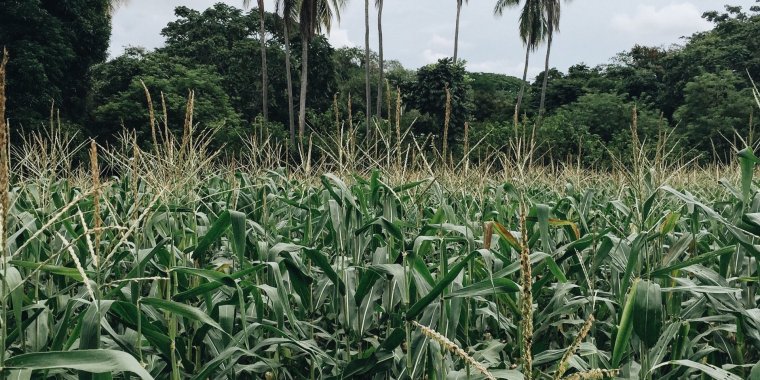| News / Science News |
El Niño linked to widespread crop failures
A paper showed that the El Niño Southern Oscillation, a warm water wave that travels across the Pacific every three to five years, causes a variety of irregular weather patterns, which affect crops worldwide.

Researchers found that maize is particularly susceptible to crop failure as a result of climate variability. Photo: Pablo García Saldaña/Unsplash
The findings contradict the long-held assumption that crop failures in geographically distant breadbasket nations such as the United States, China and Argentina are unrelated.
Researchers also looked at the effect of the Indian Ocean Dipole, or Indian Niño, and other climate patterns on crops.
They found that maize, or corn, was the most susceptible to crop failure, with climate variability causing 18 per cent of growth volatility globally between 1980 and 2010. Soy bean and wheat were less at risk, with climate variability accounting for seven per cent and six per cent of year-to-year changes in yields respectively.
To understand El Niño’s impact on crops, the team from the International Research Institute for Climate and Society at Columbia University in the United States analysed earlier climate models of El Niño and compared this with data on crop harvests.
El Niño shifts the growing season around the tropics, causes winter drought in Africa and South America, and changes the timing of monsoon rainfalls in Asia.
The study showed that El Niño can result in simultaneous crop failures in different parts of the world, with certain regions particularly at risk. Looking at maize, the phenomenon caused 38 per cent of production variance in northeast Brazil, 20 per cent in southwest Mexico and 15 per cent in West Africa.
South and Central America are particularly strongly influenced by El Niño and this can have both negative and positive consequences for crops, the study showed. During an El Niño phase, the eastern side of South America experiences extra rain and cloudiness, which leads to above-normal yields for maize and soybean but also an increased risk of diseases in wheat varieties.
Better understanding of the phenomenon’s effect on crops could help farmers diversify to more adaptable crops such as tuber vegetables or sorghum, and adopt farming practices to cope with fluctuating weather patterns. They should prefer short-cycle varieties instead of long-cycle that would have more chance to be affected by drought. Zero tillage is recommended to avoid high evaporation and transpiration in their plot.
The phenomenon, which is only just starting to be understood, is likely to change as global warming intensifies. Some scientists predict that El Niño might concentrate in the Pacific without traversing its lengths, while others suggest its pattern may become less predictable. (SciDev.Net)
YOU MAY ALSO LIKE




